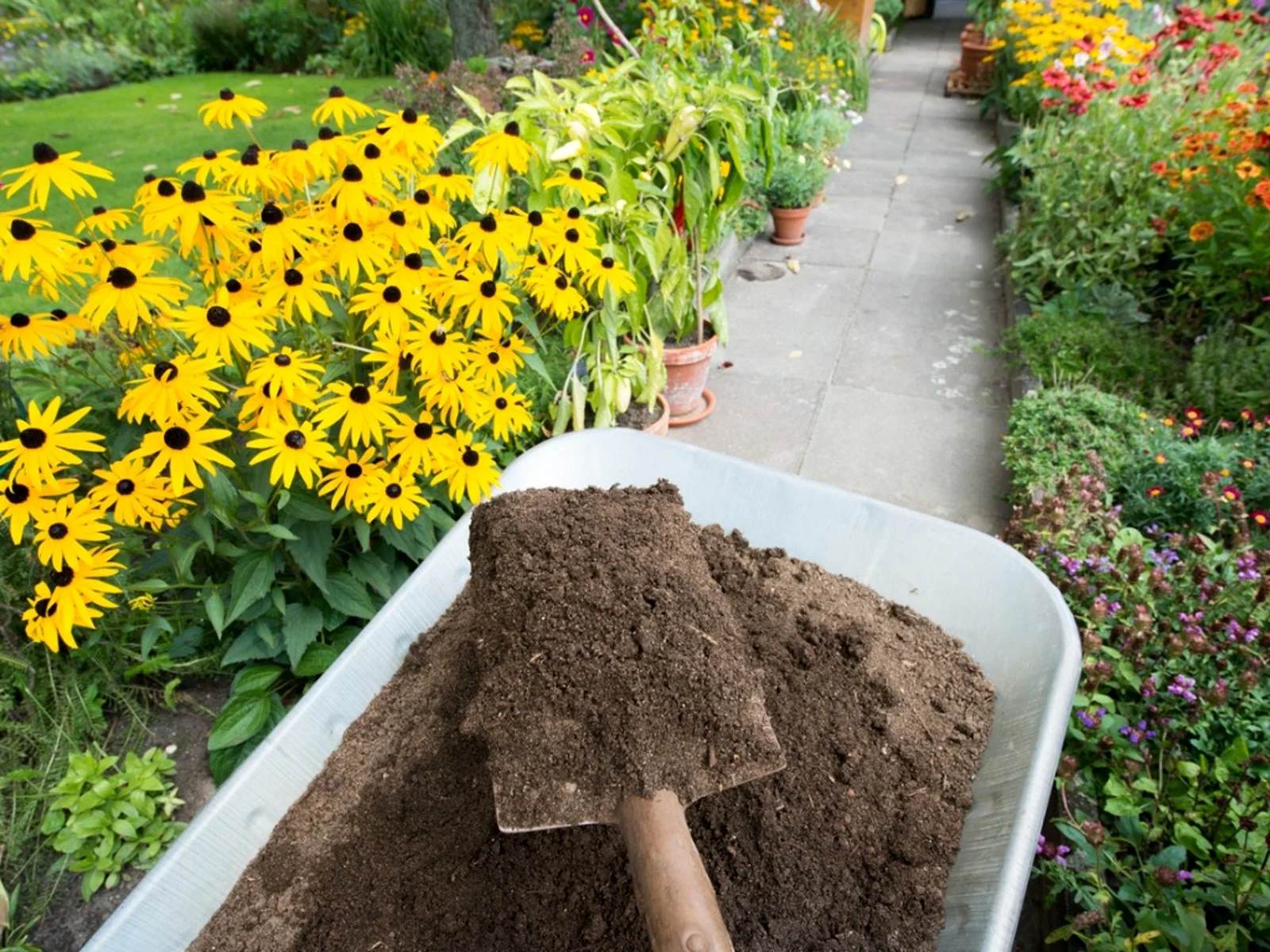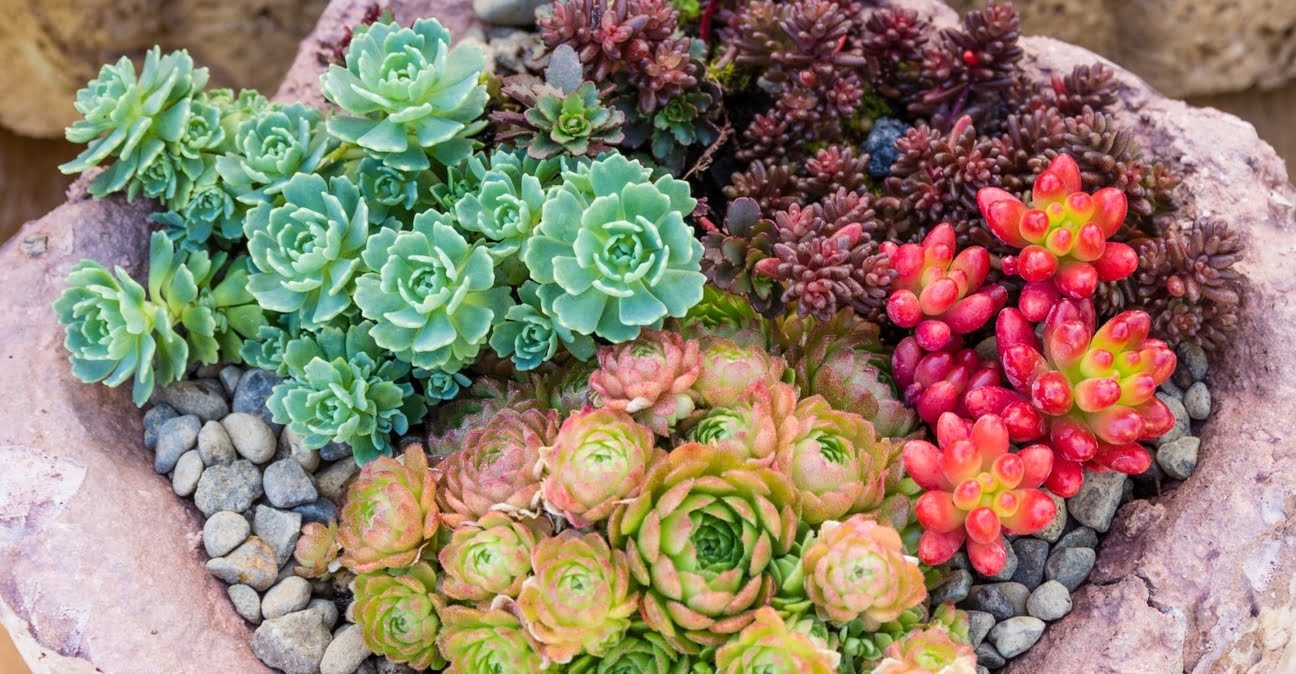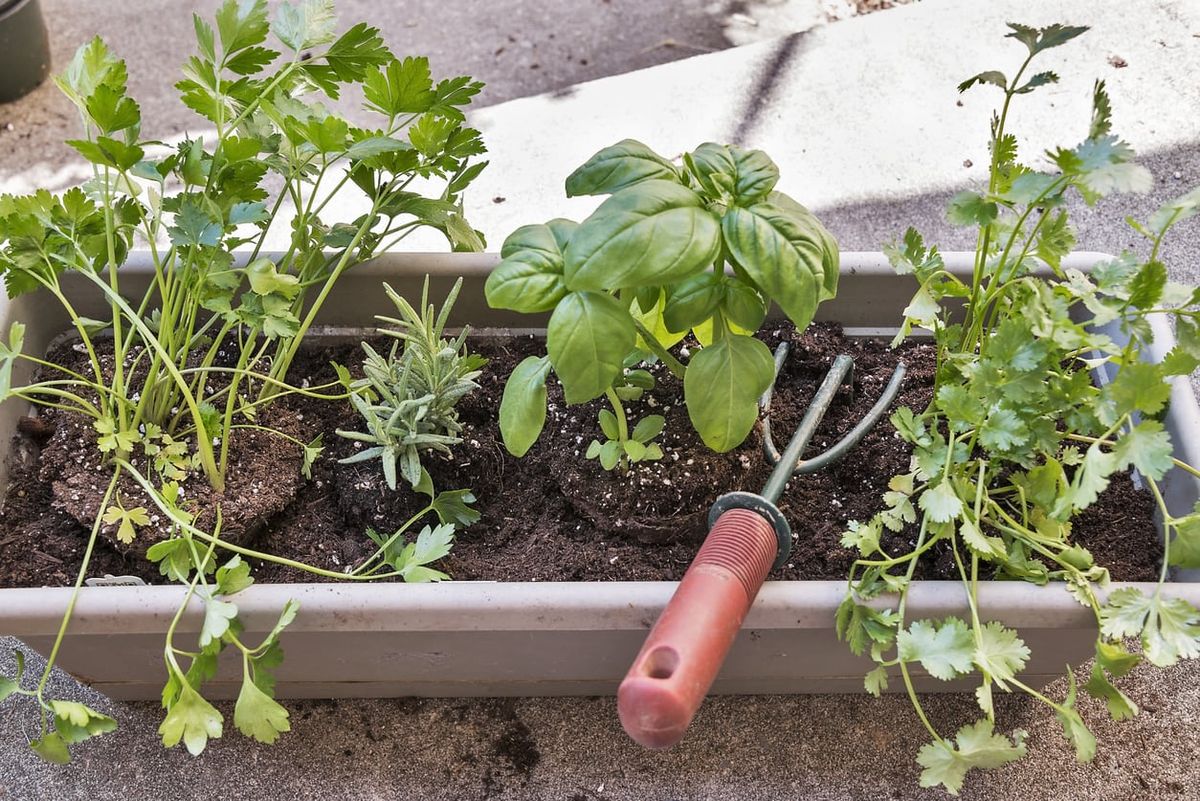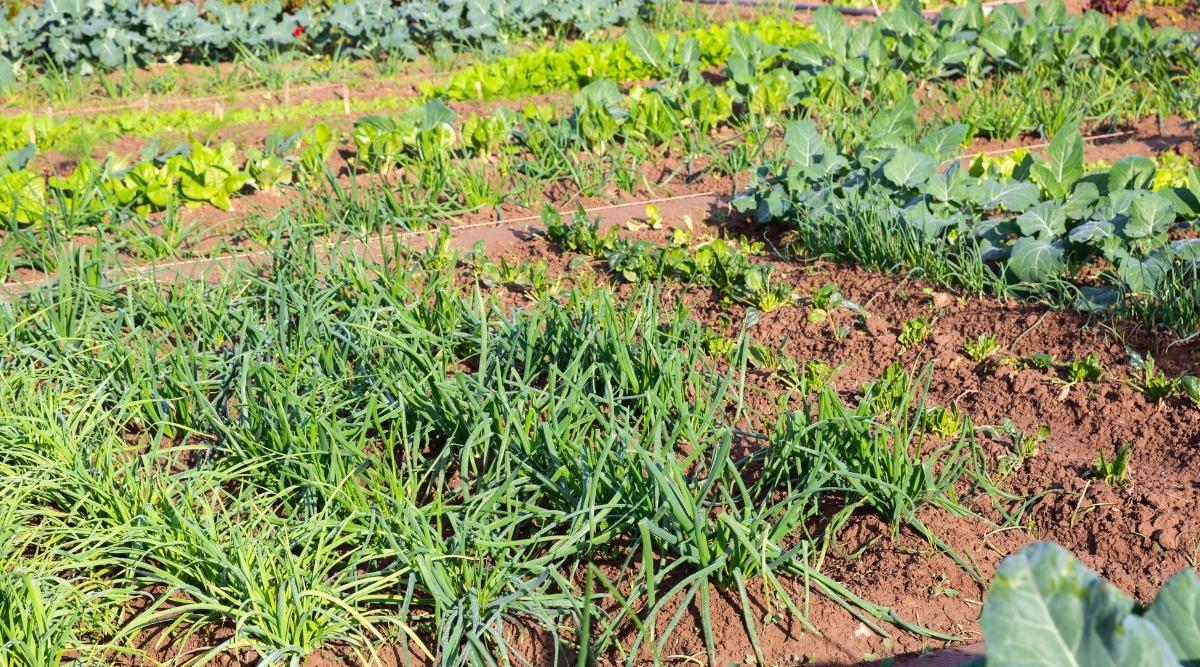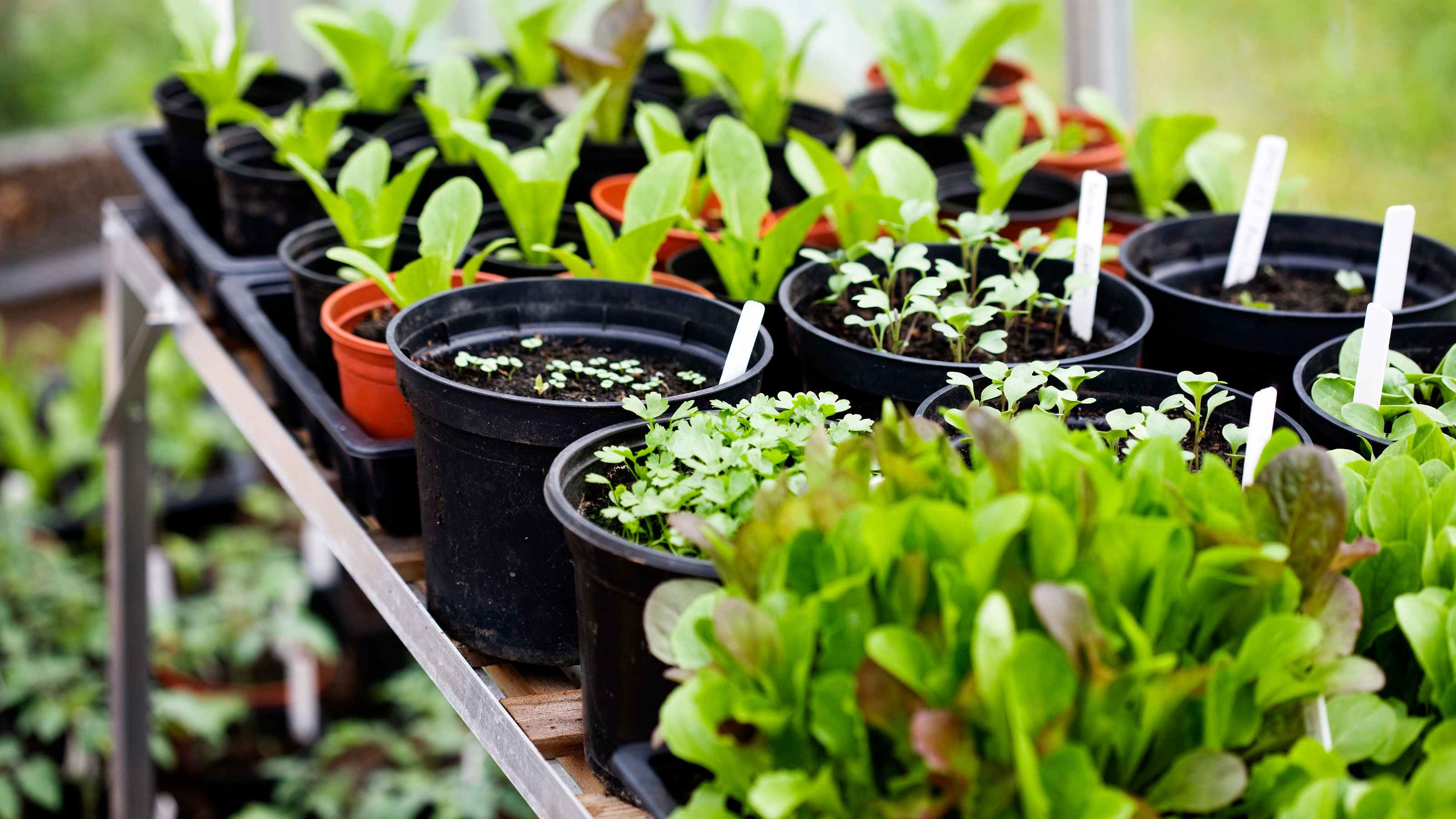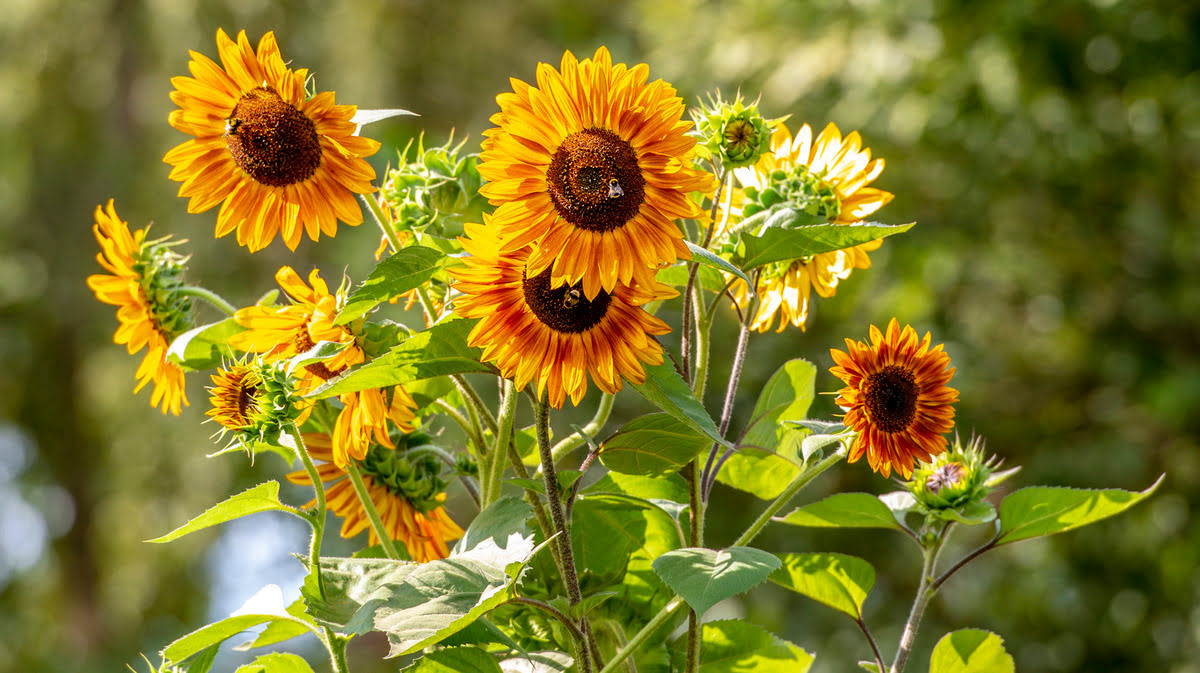Home>Types of Gardening>Ornamental Gardening>When Can I Plant Perennials


Ornamental Gardening
When Can I Plant Perennials
Modified: February 6, 2024
Discover the best time to plant perennials for your ornamental gardening needs. Get expert tips on when to start your garden and ensure a beautiful landscape.
(Many of the links in this article redirect to a specific reviewed product. Your purchase of these products through affiliate links helps to generate commission for Chicagolandgardening.com, at no extra cost. Learn more)
Table of Contents
Introduction
Gardening is an art that brings beauty to our surroundings, and one of the most popular realms of gardening is ornamental gardening. Ornamental gardening focuses on the cultivation and arrangement of flowers, foliage, and other non-edible plants to create a visually stunning outdoor space. A key aspect of ornamental gardening is the use of perennials.
Perennials are plants that live for more than two years, unlike annuals that need to be replanted every year. They are the backbone of any ornamental garden, providing a consistent source of color and texture throughout the seasons. From vibrant flowers to graceful grasses, perennials offer a wide variety of options to suit any garden style or personal preference.
However, successfully growing perennials requires careful planning and knowledge about the best time to plant them. Planting perennials at the right time ensures that they establish a strong root system and thrive in their new environment. In this article, we will explore the factors to consider before planting perennials, the best time to plant them, and how to properly care for them after planting.
Whether you’re a seasoned gardener or a novice, this article will provide you with the information you need to create a stunning ornamental garden that will flourish year after year. So, let’s dive in and discover the secrets to successful perennial gardening!
Understanding Perennials
Before we delve into the best time to plant perennials, it is important to have a good understanding of what perennials are and how they differ from other types of plants. Perennials are plants that live for more than two years, often flowering and producing foliage year after year. Unlike annuals, which complete their life cycle in one season, and biennials, which take two years to complete their cycle, perennials have the ability to regrow and bloom each year.
Perennials come in a wide range of shapes, sizes, and colors, making them a versatile choice for ornamental gardening. They can be classified into several categories, including herbaceous perennials, which die back to the ground in winter and regrow in spring, and woody perennials, such as shrubs and small trees, which maintain their structure and foliage throughout the year.
One of the key advantages of growing perennials is their longevity. Once established, they require less maintenance compared to annuals, reducing the need for replanting every year. Perennials also have the ability to withstand various weather conditions, making them a resilient option for all gardeners.
Another characteristic of perennials is their ability to adapt to different growing conditions. Some perennials thrive in full sun, while others prefer partial shade. Similarly, certain perennials prefer moist soil, while others are more drought-tolerant. Understanding the specific requirements of the perennials you choose will greatly contribute to their success in your garden.
It’s important to note that while perennials are known for their longevity, not all perennials are created equal. Some perennials may only live for a few years, while others can live for decades. Researching the lifespan of the perennials you select will help you plan for future garden changes and ensure a cohesive design.
Lastly, perennials can be combined with other types of plants, such as annuals and bulbs, to create dynamic and ever-changing displays throughout the seasons. This allows for endless possibilities in designing your ornamental garden, providing visual interest and variety.
Now that we have a better understanding of what perennials are and their advantages, let’s move on to explore the factors to consider before planting them.
Factors to Consider Before Planting
Before you get your hands dirty and start planting perennials, there are a few important factors to consider. By taking these factors into account, you can ensure the success and longevity of your ornamental garden.
1. Climate: Understanding your climate is crucial when selecting and planting perennials. Different perennials thrive in different climates, so it’s important to choose plants that are suited to your region. Consider the average annual temperature, rainfall, and frost dates in your area to determine the best perennials for your garden.
2. Soil Type: The type of soil in your garden plays a significant role in the growth and health of your perennials. Some perennials prefer well-draining sandy soil, while others thrive in moist, clay-like soil. Testing your soil’s pH level, drainage, and fertility can help you select perennials that will thrive in your specific soil conditions.
3. Sun Exposure: Perennials have varying sun exposure requirements, ranging from full sun to partial shade. Evaluate the amount of sunlight your garden receives throughout the day and choose perennials accordingly. Plants that require full sun typically need at least six hours of direct sunlight, while those that prefer partial shade can tolerate a few hours of direct sunlight or dappled shade.
4. Watering Needs: Consider the water requirements of the perennials you plan to plant. Some perennials are drought-tolerant and can withstand dry spells, while others need consistent moisture. Creating a watering schedule based on your plant’s needs will help them thrive and prevent overwatering or underwatering.
5. Space and Design: Evaluate the available space in your garden and consider the design and layout you envision. Some perennials spread and fill in space, while others grow in clumps or upright forms. Understanding the growth habit and size of your perennials is important for proper spacing and arrangement.
6. Companion Planting: Consider companion plants that can complement your perennials and provide additional benefits. Companion plants can attract pollinators, repel pests, or enhance the overall aesthetic of your garden. Researching compatible plants will help create a harmonious and thriving garden ecosystem.
By taking these factors into account, you can make informed decisions about the types of perennials that will thrive in your garden. Once you have a clear understanding of these factors, you are ready to determine the best time to plant your selected perennials.
Best Time to Plant Perennials
The timing of planting perennials is crucial for their success and establishment in the garden. The ideal time to plant perennials varies depending on the climate, the specific type of perennial, and local conditions. However, there are some general guidelines to keep in mind.
1. Spring: Spring is generally considered the best time to plant most perennials. As the weather warms up and the soil begins to thaw, perennials have the opportunity to establish their root systems before the hot summer months. Early spring, after the last frost date in your area, is an ideal time to start planting. This allows the perennials to take advantage of the ample moisture and longer growing season ahead.
2. Fall: Fall is another optimal time to plant perennials, especially in regions with mild climates. Planting in the fall allows the perennials to establish their root systems before winter dormancy. The cooler temperatures and increased rainfall during the fall season help provide the necessary moisture for root development. Planting in the fall also gives the perennials a head start in the following spring.
3. Summer: Planting perennials during the summer can be challenging due to the intense heat and potential drought conditions. However, if you select heat-tolerant perennials and take extra care with watering, it is still possible to successfully plant during the summer. Keep in mind that you may need to provide additional shade and regular watering to help the new plants cope with the heat stress.
Before planting, it’s important to check the specific recommendations for the perennials you have chosen. Some perennials may have specific requirements or may thrive better when planted at different times of the year. It’s always a good idea to consult gardening references or local experts to get accurate information about the best planting times for specific perennials in your area.
In addition to the seasonal considerations, it’s essential to consider the weather conditions at the time of planting. Avoid planting perennials during extremely hot or dry periods, as these conditions can stress the plants and hinder their successful establishment. Aim for planting on cooler, cloudy days or after a light rain to give the perennials an easier adjustment period.
By planting perennials at the right time, you give them the best chance of developing strong root systems and adapting to their new environment. With proper timing and care, your perennials will reward you with vibrant blooms and lush foliage year after year.
Preparing the Soil for Planting
Preparing the soil is a crucial step in ensuring the success of your perennial plants. Well-prepared soil provides the necessary nutrients, drainage, and structure for the plants to establish and thrive. Here are some steps to take when preparing the soil for planting perennials:
1. Clear the Area: Start by clearing the area of any weeds, grass, or debris. Remove any large rocks or roots that may hinder root growth or cause drainage issues. This will create a clean slate for your perennials to grow.
2. Improve Drainage: Good drainage is essential to prevent waterlogged soil and root rot. If your soil tends to retain water, consider adding organic matter such as compost or well-rotted manure to improve drainage. This will help create a loose and well-aerated soil structure that allows water to drain freely.
3. Test the Soil: Conduct a soil test to determine the pH level and nutrient content of your soil. Many perennials prefer a slightly acidic to neutral pH range. Based on the test results, you may need to add soil amendments such as lime to raise the pH or sulfur to lower it. Additionally, consider adding balanced fertilizer or organic matter to provide essential nutrients.
4. Loosen the Soil: Use a garden fork or a tiller to loosen the soil in the planting area. This helps break up compacted soil, allowing roots to penetrate and establish more easily. Avoid over-tilling, as this can destroy the soil structure and lead to poor drainage.
5. Address Nutrient Deficiencies: If your soil lacks essential nutrients, amend it with compost or organic fertilizers specific to the needs of your perennials. This will provide a nutrient-rich environment for the plants to thrive. Follow the recommended application rates and mix the amendments into the soil thoroughly.
6. Add Mulch: After planting your perennials, apply a layer of organic mulch around the plants. Mulch helps retain moisture, suppresses weed growth, and moderates soil temperature. Use materials like shredded bark, straw, or compost. Avoid piling the mulch directly against the plant stems, as this can cause stem rot.
Remember to consider the specific needs of the perennials you are planting. Some perennials may have specific soil requirements, such as sandier or richer soil. Research the preferences of your chosen plants and adjust your soil preparation accordingly.
By taking the time to properly prepare the soil, you set the foundation for healthy and thriving perennial plants. Nutrient-rich, well-draining soil will contribute to strong root development and overall plant growth, resulting in an exquisite ornamental garden.
Choosing the Right Perennials
Choosing the right perennials is a crucial step in creating a beautiful and successful ornamental garden. There are numerous factors to consider when selecting perennials that will thrive in your specific garden conditions and meet your aesthetic preferences. Here are some key considerations to keep in mind:
1. Hardiness: Consider the hardiness zone of your garden, which indicates the minimum temperature a plant can withstand. Choose perennials that are suitable for your hardiness zone to ensure their survival through the winter months.
2. Height and Spread: Take into account the mature height and spread of the perennials you are considering. This will help you plan the spacing and arrangement in your garden beds, ensuring that the plants have enough room to grow and showcase their beauty.
3. Blooming Period: Consider the blooming period of the perennials. Choose a variety that offers different bloom times, so you have a continuous display of color and interest throughout the seasons. Mix early, mid, and late-blooming perennials to maximize the visual impact of your garden.
4. Color Palette: Think about the color scheme you want to achieve in your garden. Choose perennials that complement each other and create a harmonious combination of colors. Consider the foliage color as well, as leaves can add visual interest even when the plants are not in bloom.
5. Texture and Form: Pay attention to the texture and form of the perennials. Combine plants with different leaf shapes, textures, and growth habits to create an engaging and dynamic garden design. Pair fine-textured plants with bold ones to create contrast and visual intrigue.
6. Site Conditions: Evaluate the specific site conditions in your garden, such as sun exposure, soil type, and moisture levels. Select perennials that are well-suited to these conditions, as they will require less maintenance and be more likely to thrive in their environment.
7. Wildlife Appeal: Consider the wildlife appeal of the perennials. Choose plants that attract beneficial insects, birds, and butterflies to your garden. This can contribute to a healthy ecosystem and provide an added element of beauty and life to your outdoor space.
8. Personal Preferences: Ultimately, choose perennials that you personally love and resonate with. Gardening is an expression of creativity and personal taste, so select plants that bring you joy and reflect your unique style.
Researching, visiting local nurseries, and seeking advice from experienced gardeners can help you make informed decisions and ensure the best selection of perennials for your ornamental garden. Remember to balance practical considerations with your personal preferences, resulting in a garden that delights and inspires.
Planting Perennials
Once you have selected the right perennials for your garden, it’s time to roll up your sleeves and plant them. Proper planting techniques are essential for ensuring the health and growth of your perennials. Here are some steps to follow when planting perennials:
1. Prepare the Planting Hole: Dig a hole that is slightly wider and deeper than the root ball of your perennial. Loosen the soil in the hole with a garden fork to promote better root penetration.
2. Amend the Soil (if needed): If your soil is heavy or lacks organic matter, mix in compost or well-rotted manure to improve its fertility and drainage. This will create a favorable growing environment for the roots of your perennials.
3. Remove the Plant from its Container: Gently remove the perennial from its container by tapping the sides or squeezing the bottom. Carefully loosen any tangled or circling roots to encourage outward growth.
4. Plant at the Proper Depth: Place the perennial in the center of the planting hole at the appropriate depth. Planting too deep can suffocate the roots, while planting too shallow can expose them to extreme temperatures. The top of the root ball should sit level with or slightly above the soil surface.
5. Backfill and Firm the Soil: Fill the hole with soil, gently firming it around the root ball as you go. Avoid over-packing the soil, as this can create a compacted environment that restricts root growth. Ensure that the plant is stable and upright.
6. Water the Plant: After planting, thoroughly water the perennial to settle the soil and remove any air pockets around the roots. This will promote good soil-to-root contact and help the plant establish quickly.
7. Add Mulch: Apply a layer of organic mulch, such as shredded bark or straw, around the base of the plant. Mulch helps retain moisture, suppresses weed growth, and regulates soil temperature. However, be mindful not to pile the mulch directly against the stem to prevent rotting.
8. Provide Adequate Care: Follow the specific care instructions for each perennial, including proper watering, fertilizing, and pruning requirements. Consistent care will help your perennials establish strong root systems and flourish in their new home.
Remember to give your newly planted perennials some time to adjust and settle into their new environment. Monitor their progress and provide ongoing care as needed to ensure their healthy growth and development.
With proper planting techniques and care, your perennials will reward you with spectacular blooms, vibrant foliage, and a thriving ornamental garden for years to come.
Caring for Newly Planted Perennials
Once you have planted your perennials, it’s important to provide proper care to help them establish and thrive in their new environment. Newly planted perennials are more vulnerable and require extra attention during the initial stages. Here are some essential care tips for newly planted perennials:
1. Watering: Adequate watering is crucial for the success of newly planted perennials. Keep the soil consistently moist but not waterlogged. Water deeply, allowing the water to penetrate the root zone. As a general rule, provide about an inch of water per week, adjusting for rainfall and temperature.
2. Mulching: Apply a layer of organic mulch around your newly planted perennials. Mulch helps conserve moisture, suppress weeds, and provide insulation for the roots. Keep the mulch a couple of inches away from the plant stems to prevent stem rot.
3. Staking: If your perennials have tall and slender stems, consider staking them for support. Use bamboo stakes or other appropriate materials to prevent the plants from bending or breaking in strong winds or heavy rain.
4. Pruning: It’s generally recommended to avoid pruning newly planted perennials unless there are damaged or diseased parts. Allow the plants to focus on root and foliage growth. Once they are established, you can prune them as needed to maintain shape and promote better flowering.
5. Weed Control: Regularly check your garden beds for weeds that may compete with your newly planted perennials for nutrients and moisture. Remove weeds by hand or use mulch to suppress their growth and keep the garden beds clean.
6. Fertilizing: Newly planted perennials generally do not require heavy fertilization. If you have amended the soil during planting, it should have enough nutrients to sustain the plants initially. However, you can apply a balanced slow-release fertilizer in the following growing seasons to promote healthy growth.
7. Protect from Pests and Diseases: Monitor your perennials for signs of pests and diseases. Identify and address any issues promptly to prevent further damage. You can use organic pest control methods or seek advice from local gardening resources for effective solutions.
8. Monitor Growth and Health: Keep a close eye on your newly planted perennials as they establish. Look out for any signs of stress such as yellowing leaves, wilting, or stunted growth. Timely intervention can help address any issues and ensure the long-term health of your plants.
Remember that every perennial species may have specific care requirements, so it’s essential to research the needs of each plant. Follow the care instructions provided by the nursery or consult reliable gardening resources to ensure you are providing the best care for your specific perennials.
By providing proper watering, mulching, and ongoing care, your newly planted perennials will settle into their new home and grow into healthy, beautiful plants that will grace your garden for years to come.
Overwintering Perennials
Overwintering perennials is a critical step in ensuring their survival and reemergence in the following growing season. While many perennials are hardy and can tolerate winter conditions, it’s important to provide them with appropriate care and protection to help them withstand the cold temperatures. Here are some tips for successfully overwintering perennials:
1. Cut Back and Clean: As fall approaches, remove any dead or dying foliage from your perennials. Cutting back the plants helps prevent disease and removes potential hiding places for pests. However, some perennials, like ornamental grasses or those with attractive seed heads, can be left standing to provide interest and food for birds during the winter.
2. Mulch: Apply a layer of organic mulch, such as straw or shredded leaves, around the base of your perennials. Mulch acts as insulation, protecting the roots from extreme temperature fluctuations and preventing frost heaving. Apply the mulch to a depth of 2-4 inches, being careful not to smother the crowns of the plants.
3. Watering: Adequate watering is important before the ground freezes. Give your perennials a deep watering to ensure they have enough moisture to sustain them during the winter months. However, be mindful of overwatering, as soggy soil can lead to rot and other issues.
4. Protect from Extreme Cold: If you live in an area with harsh winter conditions, consider additional protection for your perennials. Use frost blankets, burlap, or other breathable materials to create barriers around the plants. This helps shield them from cold winds and extreme temperatures.
5. Monitor and Adjust: Keep an eye on your overwintering perennials and make adjustments as needed. Check the moisture levels in the soil periodically, especially during dry winter spells, and provide supplemental watering if necessary. Monitor for signs of pest or disease activity and address any issues promptly.
6. Remove Mulch in Spring: As the weather starts to warm up in spring, gradually remove the mulch around your perennials. This allows the plants to receive sunlight and resume their growth. Be cautious not to remove the mulch too early, as late frosts can still occur. Gradual removal gives the plants time to acclimate to changing conditions.
7. Divide and Transplant: Late winter or early spring is an excellent time to divide and transplant certain perennials. Dividing overcrowded plants not only revitalizes them but also allows you to propagate new plants. Follow proper division techniques and replant the divisions in suitable locations.
8. Monitor for Pests and Diseases: As the plants emerge from dormancy, be vigilant in monitoring for pest infestations or signs of disease. Early intervention can help prevent further damage and ensure the health of your perennials.
Remember, the specific care requirements for overwintering perennials may vary depending on the plant species and your region’s climate. Consult gardening references or seek advice from local experts to ensure you are following the best practices for overwintering specific perennials in your area.
By providing the necessary care and protection, you can help your perennials survive the winter and emerge in the spring with renewed vigor, ready to grace your garden once again.
Conclusion
Ornamental gardening with perennials offers a world of beauty, color, and texture that can transform any outdoor space into a stunning oasis. Understanding the fundamentals of growing and caring for perennials is essential for creating a successful and visually pleasing garden.
By considering important factors such as climate, soil type, sun exposure, and water requirements, you can select the right perennials that will thrive in your specific growing conditions. Planting at the appropriate time, preparing the soil, and providing proper care for newly planted perennials will help them establish strong root systems and grow into healthy, vigorous plants.
As your perennials mature, you can incorporate them into your garden design, taking into account their height, spread, blooming period, color palette, and texture. With a well-planned arrangement, your garden will showcase a continuous display of vibrant blooms and interesting foliage throughout the seasons.
Overwintering perennials is also crucial for their survival and reemergence in the following year. By taking steps to protect them from extreme temperatures, providing adequate moisture, and monitoring for pests and diseases, you can ensure their well-being during the colder months.
In the end, ornamental gardening with perennials is not just about creating a visually pleasing landscape. It is a journey of creativity, connection with nature, and the joy of witnessing the growth and transformation of your garden over time.
So, whether you are a novice gardener or a seasoned enthusiast, take the time to explore the world of perennials and unleash your creative side. With the right knowledge and care, your ornamental garden will become a source of pride, tranquility, and inspiration for years to come.
